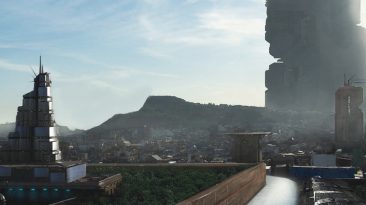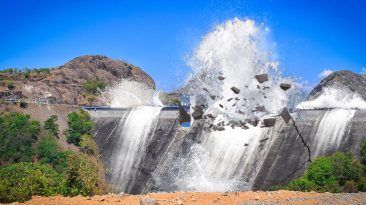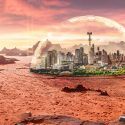The mega-earthquake. It’s coming. We don’t know exactly when or how big it’s going to be, but it’s coming. It will be chaotic, and with millions of lives on the brink, California will be put to the ultimate test.
What devastation could we be dealing with? Is California ready for something like this? What is the economic impact?
1,800 people will die. 1,600 fires will ignite. 750 people will be trapped inside buildings. 270,000 people will be unable to return home. 50,000 people will need emergency care. Search and rescue efforts will last for 19 days.
These numbers are from The United States Geological Survey. They have estimated that if a 7.8 earthquake hits along the southern San Andreas Fault on a non-windy day at about 9:00 a.m., we will observe this frightening scenario. They are also warning there is a 20% chance “”The Big One”” could hit the San Andreas Fault sometime in the next 30 years.
Some experts predict it could be a catastrophic 8.2 magnitude quake. So, what is the San Andreas Fault?
It’s a boundary between the Pacific Plate and the North American Plate. The fault extends into California roughly 1,200 kilometers (750 miles) from Cape Mendocino to the Mexican border. Cities like San Diego, Los Angeles, and Big Sur sit on the Pacific Plate. The North American Plate has San Francisco, Sacramento, and the Sierra Nevada.
San Andreas is a transform fault. This is when two plates slide past one another. The average speed of the plates moving is 0.6 centimeters (0.2 inches) a year. Although this doesn’t seem like much, they will actually lodge themselves together and not move for years, and this is where the problem starts. Imagine the damage as built-up strain finally releases and breaks the rock along the fault. This causes the plates to shift a few feet all at once. The sudden release of energy creates seismic waves, and it’s these waves we feel as earthquakes.
The San Andreas Fault has experienced massive earthquakes in the past. The Great 1906 San Francisco Earthquake of April 18th is one of the most significant earthquakes of all time. At 5:12 a.m., a foreshock was felt throughout the Bay Area. Then, 20 to 25 seconds later, the earthquake hit. The estimated magnitude was 7.9, and the violent shocks lasted for 45 to 60 seconds. It was so powerful it was felt from southern Oregon to the south of Los Angeles and inland as far as central Nevada. It’s been estimated around 2,100-2,800 people died that day.
If the mega-earthquake hits California tomorrow, what sort of devastation could we be dealing with?
If it is “The Big One,” it will have a magnitude of around 8 that would rupture a 322 km (200 mi) stretch along the southernmost part of the fault. Buildings built before 1980 are in danger of collapsing. A recent study suggests that up to 25% of the buildings constructed to the current earthquake code will be unusable after the quake.
After “The Big One,” explosions could be triggered, and fires would erupt throughout the devastated cities. Landslides could lead to more fatalities and damage. Electricity and sewage could come to a halt along with transportation. Highways, railways, airport runways, and bridges could become unusable for weeks and even months.
One of our basic survival needs is access to fresh water, which will be difficult after the quake. The major aqueduct infrastructure that pumps water into Southern California crosses the San Andreas Fault. So it seems unlikely that this would be unaffected.
Now if you are thinking it couldn’t get any worse than that, parts of the San Andreas Fault also intersect with oil and gas pipelines. If these pipelines break, the lethal consequences both for human health and the environment will be devastating. But what is the economic impact?
California has the fifth largest economy in the world. So not only would the effects be felt by California and the U.S., they would also impact the world. The estimated cost of “The Big One” is $200 billion. $33 billion of this comes from property damage and $50 billion in lost economic activity.
Less than 20% of California buildings are covered by earthquake insurance, so most people will need to pay the rebuilding cost. These same people might decide to relocate to other parts of the U.S. This trend in the dropping population was observed in Los Angeles after the two earthquakes of 1971 and 1994. The population decreased for two years after both quakes, and these were relatively small, having magnitudes of 6.5 and 6.7.
Then there is the business impact. Not just to California from the mass exodus of population, but also California’s importance to the rest of the United States. Over 40% of total imports to the U.S. come in through Los Angeles and Long Beach ports. And with the massive disruption of transportation routes, especially those that cross the San Andreas Fault, carrying these goods to the rest of the country will be deeply impacted.
So, with the largest U.S. economy and the fifth largest in the world crushed, would this send us into another global economic crash? What could the future of the U.S. and global economy look like after this?
Subscribe to What-If on YouTube or follow the show on Facebook Watch.
Sources
- “San Andreas Fault Line – Fault Zone Map And Photos”. 2020. geology.com.
- “What will happen if a mega earthquake hits California”. 2020. Business Insider.
- “The Great 1906 San Francisco Earthquake”. 2020. earthquake.usgs.gov.
- “M7.9 1857 Fort Tejon Earthquake”. 2020. usgs.gov.
- “The ‘Big One’ Is A Threat Even If You Don’T Live In California”. Jones, Lucy. 2020. Marketwatch.
- “What Is The Probability That An Earthquake Will Occur In The Los Angeles Area? In The San Francisco Bay Area? “. 2020. usgs.gov.



























